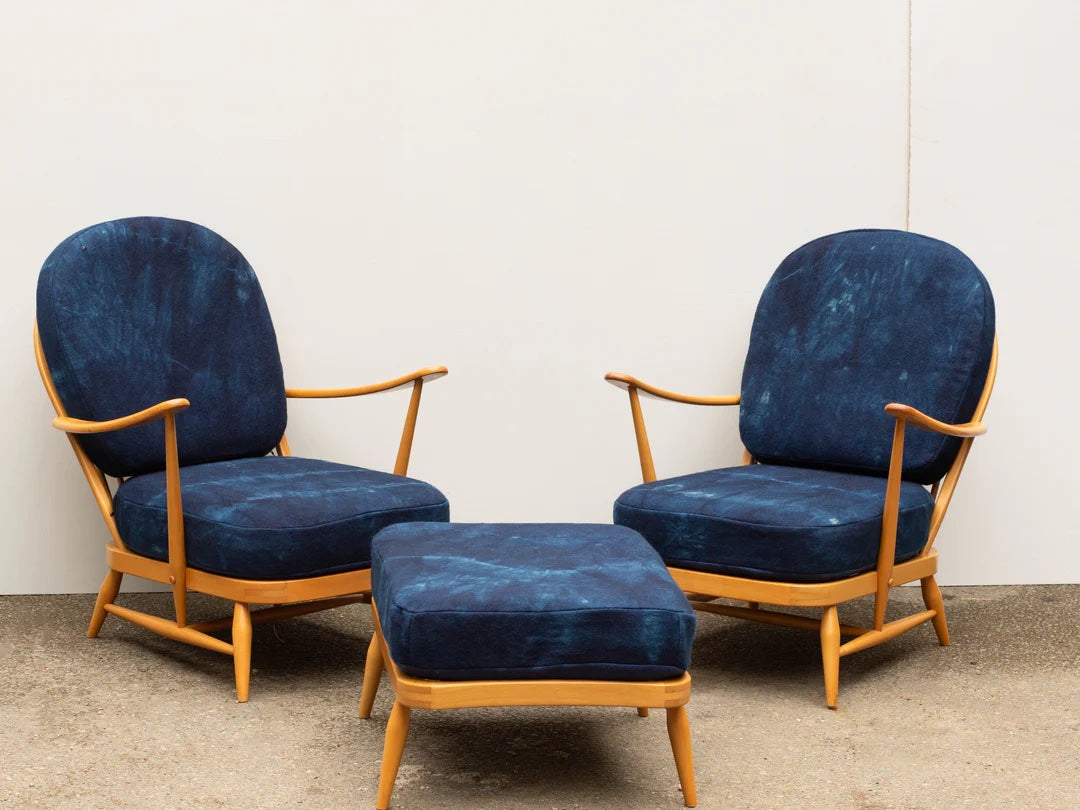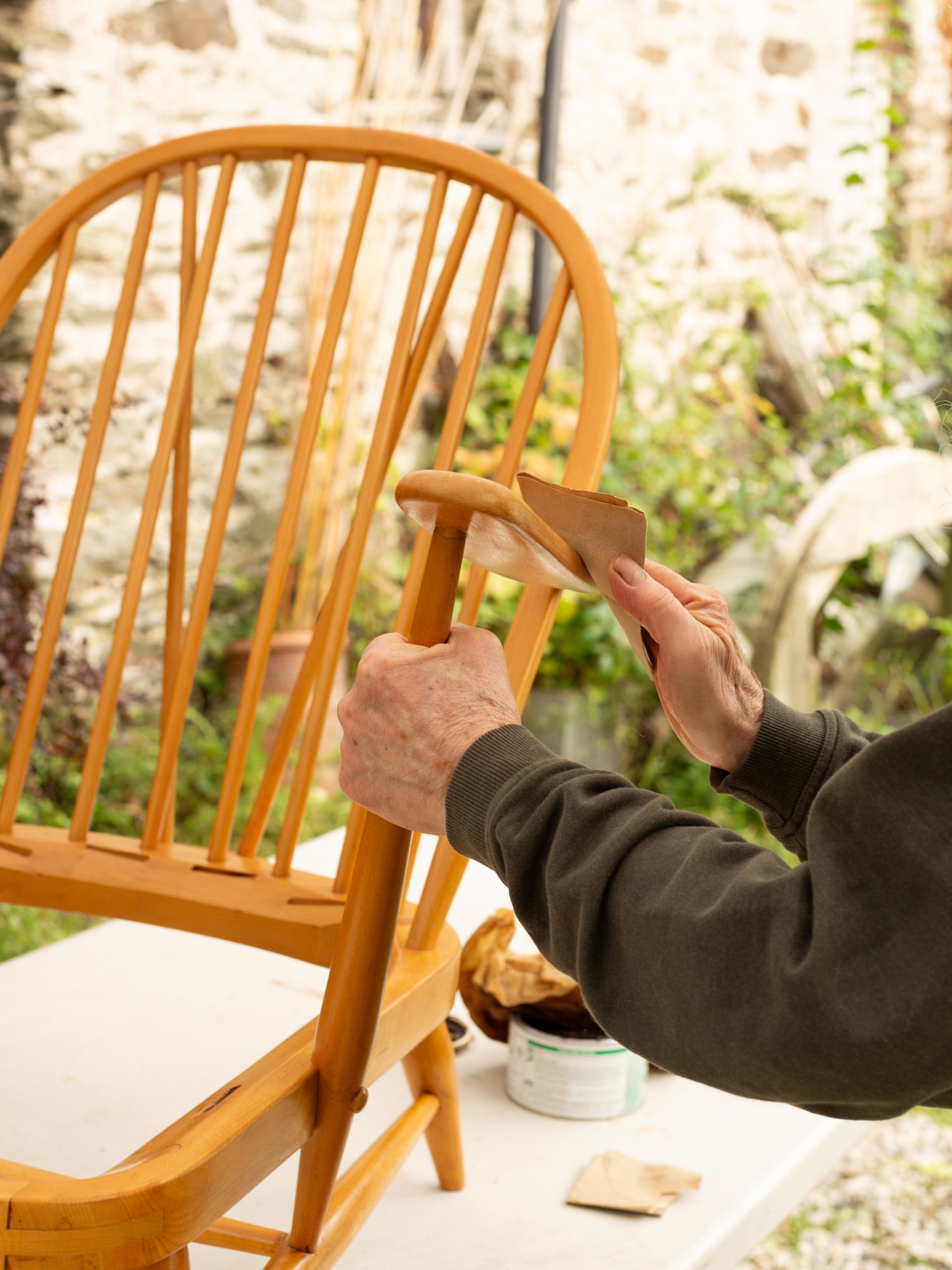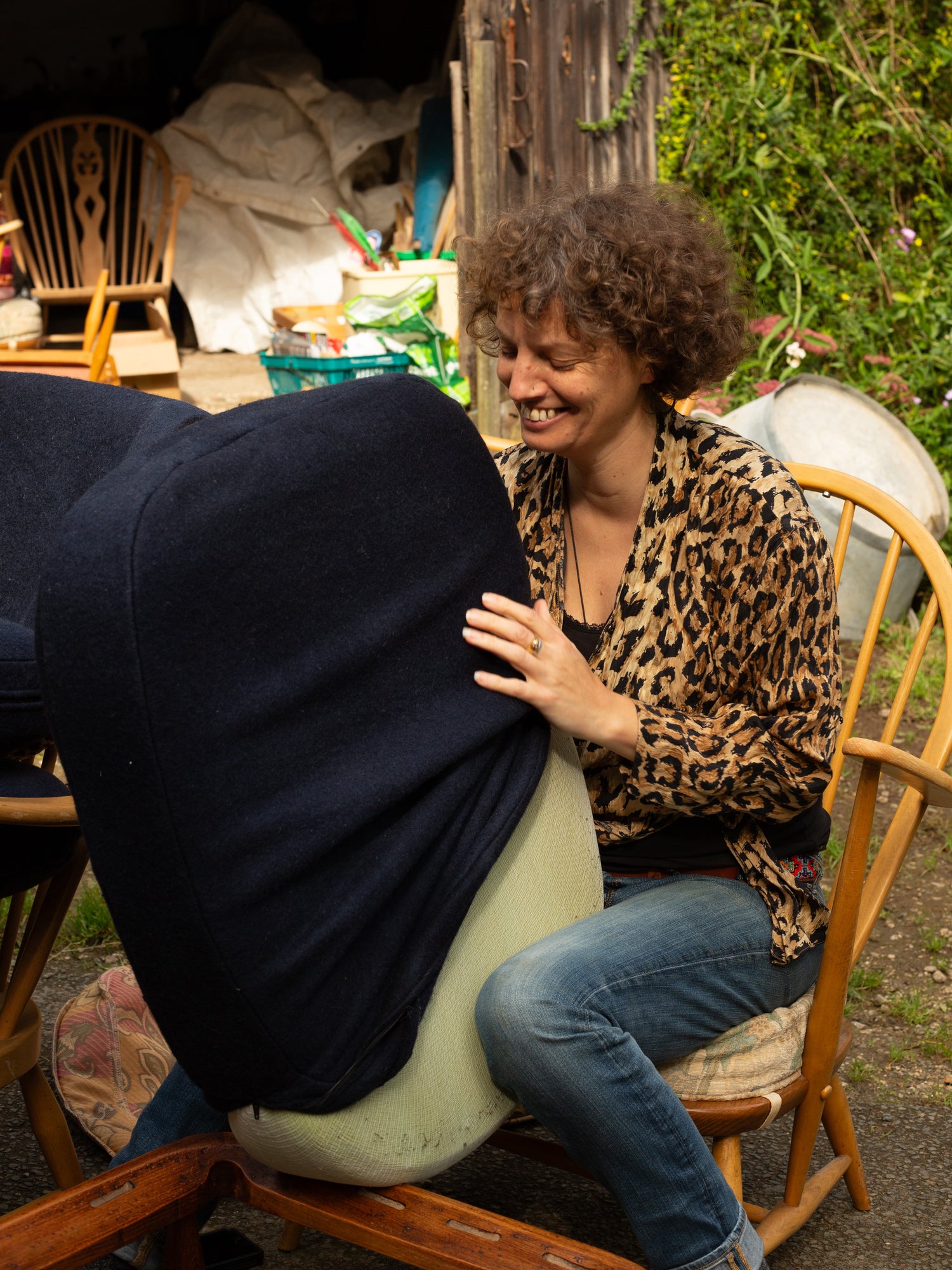
Materials
We do our best to use the most planet friendly materials and products.
Learn about our materials
MATERIALS
Wood
We love wood, everything about it. The look, the feel, the colour and patterns.
Working with wood is a labour of love. It takes patience and understanding. The learning process has been great, so lucky to have Dangerous Dad staring his 70+ years of knowledge.
Striving to be as 'right on' as possible, we apply environmentally friendly finishes that are appropriate for each individual piece.
Danish Oil - low toxicity, high quality oil which is hard-wearing, and water resistant. Excellent on stripped pieces - The Cornish Chopping Board Company
Organic Beeswax Oil - excited to have discovered this oil. It smells lovely and has a silky finish. Excellent on stripped bear pieces - Parrs
Wax - we use a hard wax to blend into the original finish. Mostly used when a blonde piece has minor restoration, (doesn't not require stripping) to enhance the overall finish - Briwax
Hard Wax Oil - the oil nourishes the wood and the hard wax protects it - Ozmo
Wool
- Pure wool is 100% natural, renewable, sustainable and biodegradable.
- Wool is cosy and warm, yet breathable and cool. It actually adapts to the current temperature.
- Wool is inherently flame retardant and will often self-extinguish. Producing less smoke and toxic fumes than synthetic fibres - making it a safer choice for us and our homes.
- Strong and long lasting - wool can withstands heavy wear over many years.
- Easy care and stain resistant - a protective waxy coat on wool fibres makes wool products resistant to staining. Wool is naturally anti-static, attracting less dust than other fibres.
- Wool has hypoallergenic and anti-bacterial properties. It helps make the air we breath cleaner and better.
- Machine washable - on a wool wash up to 40 degrees. The wool wash cycle is very gentle with lots of water, the drum only moves horizontally. This is not the same as a delicate or hand-wash, when the drum rotates. This rotation causes friction which can cause felting.
- We recommend using an eco friendly washing liquid. Do not use liquid with Lanalin in, this will coat the wool making it stiff (more like its raw state).
Foam
All of our foam conforms with the 1988 fire regulations.
- option to keep original foam for some chair models.
We are working on sourcing a rubber based alternative.
Dyeing
Indigo
- 'Of all the dyes it is the one, Indigo' - William Morris often had blue hands from his indigo experiments, just like our mum.
- Our Indigo dying takes place in the back garden. Before we begin, the space is cornered off with sheep hurdles. This is both to keep the dogs out, and mum in.
- The magic happens in big black dustbins, the dye vat is a yellowy green colour. When the fabric leaves the vat and is exposed to the air, it changes from yellow - green - blue. The idea being that the blue remains.
- Indigo dyeing is like making bread, to succeed all aspects must be correct. The exact ingredients, correct temperature, and a very special touch.
Bright Colours
- We dye bright colours to be either solid colours, subtle mottled effects or dramatic space dyes.
- This magic happens in the back of the garage. It has not actually been used as a garage for over 25 years but is still 'the garage'.
Dye Techniques
- Ombre or Dip Dye - shades blend dark to light.
- Mottled/Space Dye - an organic swirling sea or a cloudy sky. This technique can be subtle or dramatic.
- Shibori - a Japanese resist technique. Arashi Shibori using a pipe to pleat the fabric, which when dyed, creates a tigers stripe or wood grain effect.
Environmental impact
What this actually means - almost all of the dye is fixed into the wool, leaving minimal run off into the rivers and seas.
Indigo does have natural run off, however this is not harmful.
Webbing
we use a 'dead stock' stretch woven webbing, from the 1970's, made with hessian. The webbing is fixed with the loop and peg method, no staples. This is the traditional Ercol method, developed so it can be easily replaced.
Fabrics
- the decision to use vintage wool blankets as fabric, was an environmental decision.
- Welsh Tapestry blankets.
- You'll find lots of 1960s/70s fabrics used in our deckchair slings and cushion covers. These fabrics were once used for things like floral bedspreads! We often get lots of comments on how wonderful they are and remind them of their childhood.
- Oilskin table cloths, Emily brought dead-stock from the 1980's, this is super rare. In all the years of hunting, only once have we ever found this. Originally used to cover tables and seating in fast food joints.
- Offcuts - so, as any sewer will know we do have offcuts from our pattern cutting. But, as a sustainable business we have to do something with them! We make bunting, broaches and wreaths from the woolly offcuts.
If you have any questions about the materials we use please contact us via email and we'd be more than happy to answer your queries.
the_fields@outlook.com

Fully Restored Furniture
Here's a photo of Dad, sanding back one of our Made to Order 203 Ercol armchairs.

Choice of Colours
One of our unique selling points is offering you a choice of cushion cover colours. We have an extensive range of colours which are dyed in-house by our expert dyer, Mum. Here's Emily, putting on a set of new cushion covers ready to be photographed.